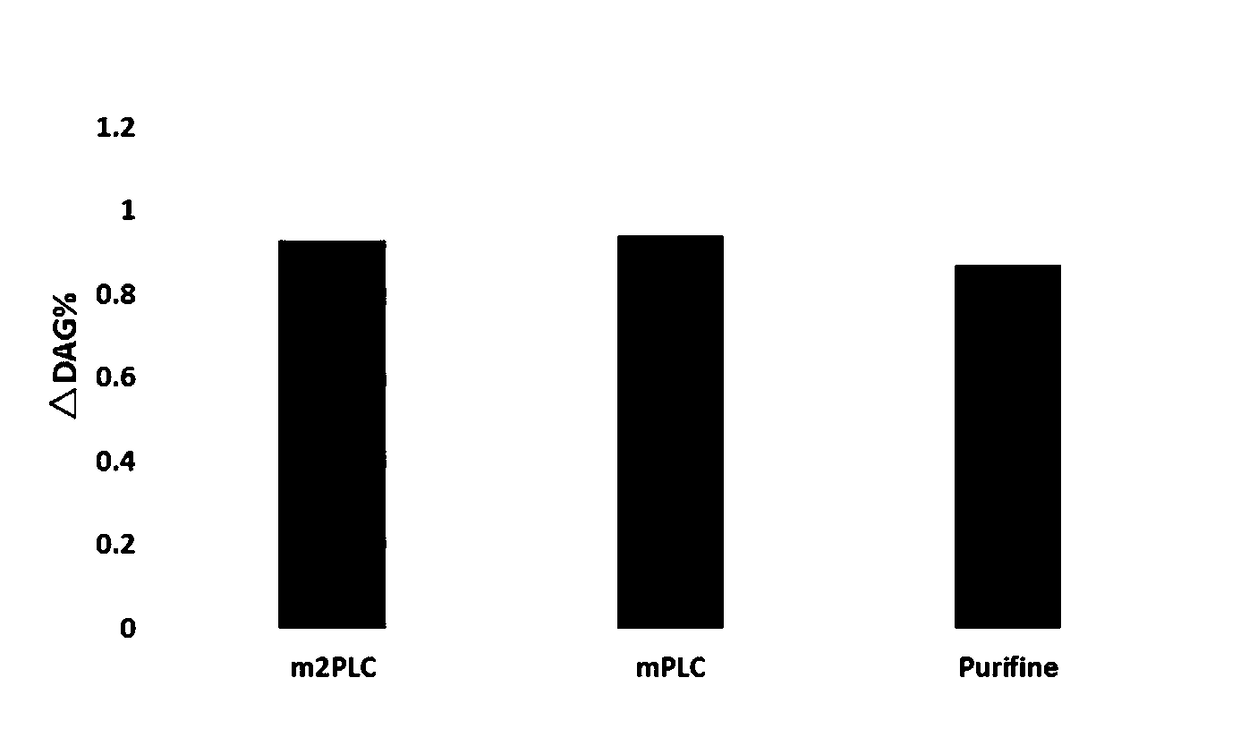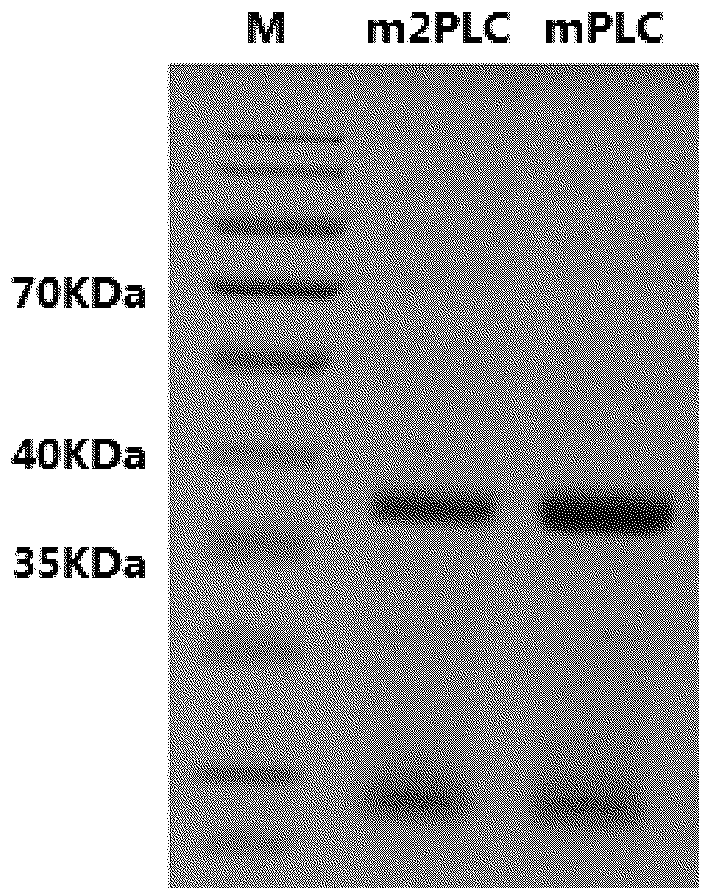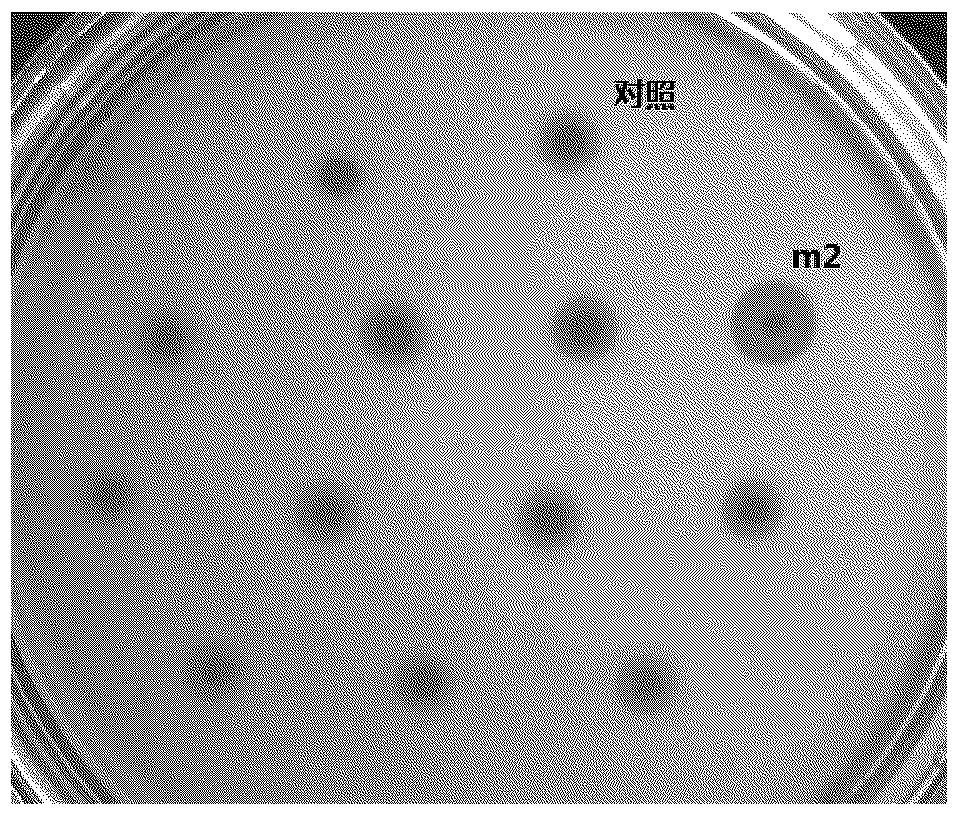Phosphatidase C and coding gene thereof
A technology of phospholipase and amino acid, applied in the field of producing the phospholipase C, can solve the problems of inedible, affecting the quality of edible oil and the like
- Summary
- Abstract
- Description
- Claims
- Application Information
AI Technical Summary
Problems solved by technology
Method used
Image
Examples
Embodiment 1
[0076] Embodiment 1: Construction of expression vector pAO-mPLC
[0077] In the way of whole gene synthesis (Shanghai Sangong), the variant BC-PC-PLC sequence mPLC (see SEQ ID NO: 1) with Y56H, N63D, N131S, and N134D mutations was synthesized. A fragment of approximately 750 bp was amplified by PCR using PrimeSTAR® HS DNA Polymerase and the primer pair PLC-F / PLC-R (see Table 1). The about 750 bp fragment was cloned into pAO815 through HindIII and EcoRI restriction sites to obtain pAO-mPLC vector.
[0078] Table 1 Primer sequences
[0079] Primer name
Embodiment 2
[0080] Example 2: Construction and screening of pAO-mPLC mutant library
[0081] Using the pAO-mPLC vector as a template, use TaKaRa Taq enzyme and primers to perform error-prone PCR on PLC-F / PLC-R (see Table 1) (additional 0.3 mM MnCl 2 ), a collection of mutant amplicon fragments with a size of about 755 bp was obtained. The obtained fragment was cloned into pAO815 through the HindIII and EcoRI restriction sites, and the obtained vector was transformed into E. coli DH5α strain to obtain a total of 1 × 10 4 mutants.
[0082] Will each 1×10 3 Each pAO-mPLC mutant was washed with 2 ml of sterile water into 8 ml of LB liquid medium (containing 100 μg / ml ampicillin), and incubated at 37°C for 4 h. The plasmid was extracted, linearized with restriction endonuclease SalI, and a fragment of about 8.5 kb was recovered. Take 500 ng of the vector (use as little DNA as possible to ensure that most positive transformants contain a single copy of the PLC gene), and transform the vecto...
Embodiment 3
[0083] Example 3: Sequence analysis of pAO-mPLC mutants
[0084] The m2 strain was inoculated in 3 ml YPD liquid medium, cultivated overnight at 30°C, and the genomic DNA was extracted. Using the genomic DNA of the m2 strain as a template, use PrimeSTAR® HS DNA polymerase and primers to perform PCR amplification on PLC-F / PLC-R (see Table 1) to obtain the DNA sequence of the PLC in the m2 strain. The obtained sequence was sent to Shanghai Sangon Bioengineering Co., Ltd., and the PLC-F / PLC-R (see Table 1) was sequenced with primers. According to the DNA sequencing results of the PLC of m2, one base was mutated, and the 10th glycine was mutated to aspartic acid (GGT→GAT).
PUM
 Login to View More
Login to View More Abstract
Description
Claims
Application Information
 Login to View More
Login to View More - R&D
- Intellectual Property
- Life Sciences
- Materials
- Tech Scout
- Unparalleled Data Quality
- Higher Quality Content
- 60% Fewer Hallucinations
Browse by: Latest US Patents, China's latest patents, Technical Efficacy Thesaurus, Application Domain, Technology Topic, Popular Technical Reports.
© 2025 PatSnap. All rights reserved.Legal|Privacy policy|Modern Slavery Act Transparency Statement|Sitemap|About US| Contact US: help@patsnap.com



